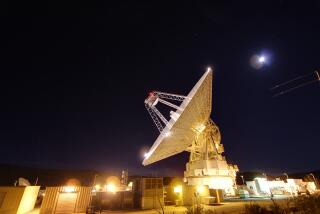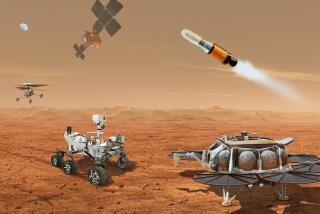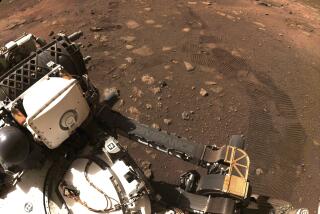Test-Program Flaws Plague NASA, Probe Finds : Space: Faulty Hubble telescope, weather satellites are among examples of failures laid partly to inadequate ground trials.
NASA’s test procedures, which allowed the Hubble Space Telescope to be launched with a misshapen mirror, are still fragmented and poorly supervised and continue to threaten the success of the nation’s space program, federal investigators say in a report to be released today.
The problems even affect a $60-million camera NASA is building to fix the $1.5-billion space telescope, the investigators reported.
Although many National Aeronautics and Space Administration programs are successful, indicating that testing on them was adequate, widespread problems remain, causing fatal flaws in some projects and costly delays in others, such as a new generation of weather satellites, the General Accounting Office found in a nine-month probe.
A copy of the report, which was requested in 1990 by Sen. Albert Gore Jr. (D-Tenn.), chairman of the Senate subcommittee on science, technology and space, was obtained by the Hartford Courant. Among its findings:
* NASA does not always prepare a comprehensive plan for how it will test a project, and does not specify that it must approve a contractor’s testing plans.
* The space agency’s various field centers around the country have different test standards. For example, each of four centers working on the space station program has a different heat test for its hardware.
* The centers conduct tests with old equipment that often breaks down, causing delays, and is too small to test some space hardware.
* Independent performance testing is not always required, even on items essential to a mission’s success.
* NASA sometimes assigns too few people to provide oversight of contractors’ work. In other cases, the NASA inspectors lack the experience they need to provide effective oversight.
* In some cases, not enough money is built into a project to allow for proper testing.
* NASA hires contractors for so much of its work that its own engineers and technicians lack the experience they need to recognize technical problems. For example, quality control inspectors at Marshall Space Flight Center in Huntsville, Ala., lacked the expertise they needed to judge test plans and analyze test results on the Hubble telescope, for which they were responsible.
The GAO repeatedly cites the Hubble debacle.
The telescope’s 92.5-inch main mirror was ground to the wrong shape. The error was not discovered until it was in orbit 380 miles up, and its ability to see faint objects has been greatly reduced.
NASA plans to install corrective optics that will overcome most of the blurring caused by the flaw.
In a letter attached to the GAO report, NASA accepted the criticism and said steps are being taken to establish a uniform testing policy and uniform test standards.
The GAO examined 10 NASA projects. The primary objective was achieved by seven. The Hubble and the Astrophysics Spacelab-1 mission will not achieve primary objectives. The astrophysics satellite was designed to observe 200 objects in the X-ray and ultraviolet wavelengths but failed because of problems with the pointing system and other equipment.
The 10th--the Galileo mission to Jupiter--cannot yet be judged.
More to Read
Sign up for Essential California
The most important California stories and recommendations in your inbox every morning.
You may occasionally receive promotional content from the Los Angeles Times.










